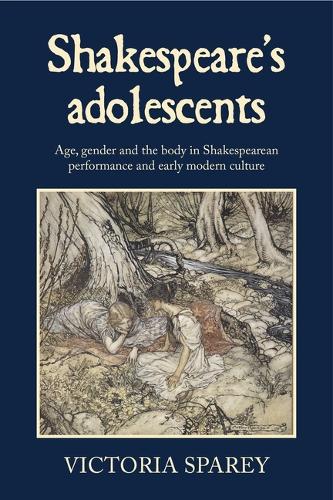
Shakespeare's Adolescents: Age, Gender and the Body in Shakespearean Performance and Early Modern Culture
(Paperback)
Available Formats
Publishing Details
Shakespeare's Adolescents: Age, Gender and the Body in Shakespearean Performance and Early Modern Culture
By (Author) Victoria Sparey
Manchester University Press
Manchester University Press
29th April 2026
United Kingdom
Classifications
Tertiary Education
Non Fiction
Literary studies: c 1600 to c 1800
Age groups: adolescents
822.33
Physical Properties
Paperback
240
Width 156mm, Height 234mm
Description
Shakespeare's adolescents examines the varied representation of adolescent characters in Shakespeare's plays.
Using early modern medical knowledge and an understanding of contemporary theatrical practices, the book unpacks complexities that surrounded the cultural and theatrical representations of 'signs' associated with an individual's physical maturation. Each chapter explores the implications of different 'signs' of puberty, in verbal cues, facial adornments, vocal traits and body sizes, to illuminate how Shakespeare presents vibrant adolescent selves and stories.
By analysing female and male puberty together in its discussion of adolescence, Shakespeare's adolescents provides fresh insight into the age-based symmetry of early modern adolescent identities. The book uses the adolescent's state of transformation to illuminate how the unfixed nature of adolescence was valued in early modern culture and through Shakespeare's celebrated characters and actors.
Reviews
'A book well worth reading, especially for graduate students and other researchers.'
CHOICE
This is a treasure trove of new and fascinating insights into the way theatre companies staged adolescence. It is also a poignant commentary on Shakespeare's empathy towards the teenage years as a time of promise and vitality and yet so often threatened by decline and age.
Ursula Potter, The University of Sydney
Shakespeares adolescents offers a timely new understanding of adolescence in early modern culture as a vibrant and esteemed stage of life. Arguing for commonalities across the gendered experience of youth, while remaining attentive to differences, it innovatively puts age ahead of gender to read Shakespeares youthful characters and the theatrical representation of aging bodies afresh. It is essential reading for Shakespeare scholars and students as well as anyone interested in age, theatre and the body in the early modern period.
Edel Lamb, Queen's University Belfast
Author Bio
Victoria Sparey is Senior Lecturer in Early Modern Literature at the University of Exeter
